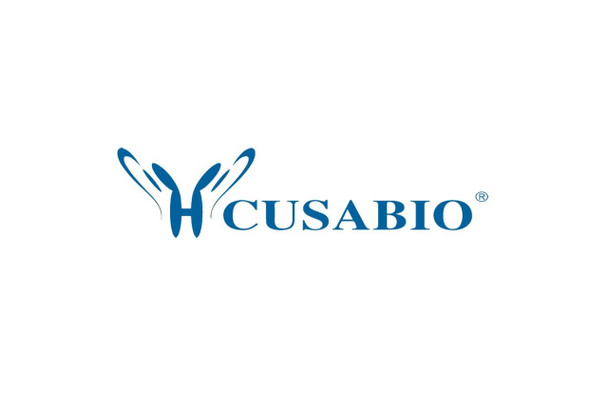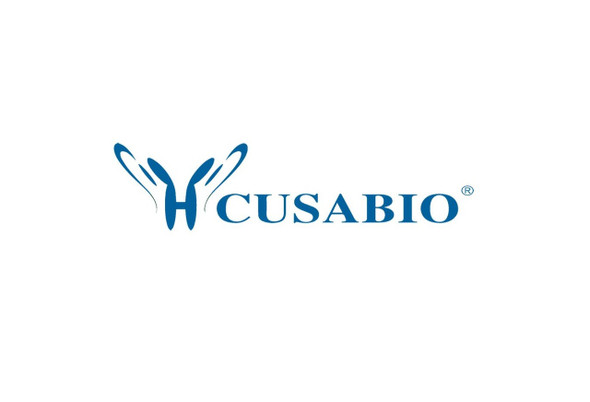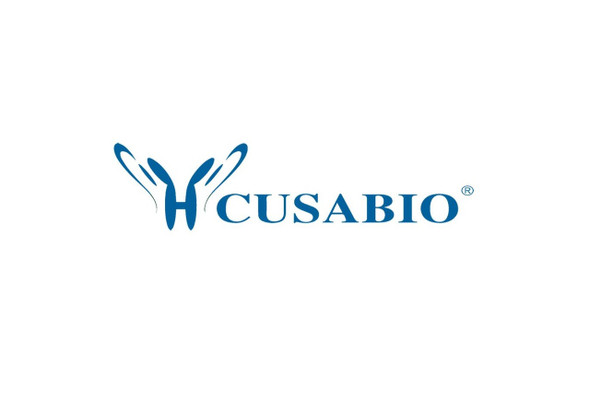Cusabio Human Recombinants
Recombinant Human THAP domain-containing protein 11 (THAP11), partial | CSB-EP846612HU
- SKU:
- CSB-EP846612HU
- Availability:
- 13 - 23 Working Days
Description
Recombinant Human THAP domain-containing protein 11 (THAP11), partial | CSB-EP846612HU | Cusabio
Alternative Name(s): CTG B43a; CTG B45d; HRIHFB2206; RONIN; THA11_HUMAN; THAP 11; THAP domain containing 11; THAP domain-containing protein 11; Thap11
Gene Names: THAP11
Research Areas: Epigenetics and Nuclear Signaling
Organism: Homo sapiens (Human)
AA Sequence: MPGFTCCVPGCYNNSHRDKALHFYTFPKDAELRRLWLKNVSRAGVSGCFSTFQPTTGHRLCSVHFQGGRKTYTVRVPTIFPLRGVNERKVARRPAGAAAARRRQQQQQQQQQQQQQQQQQQQQQQQQQQQQQSSPSASTAQTAQLQPNLVSASAAVLLTLQATVDSSQAPGSVQPAPITPTGEDVKPIDLTVQVEFAAAEGAAAAAAASELQAATAGLEAAECPMGPQLVVVGEEGFPDTGSDHSYSLSSGTTEEELLRKLNEQRDILALMEVKMKEMKGSIRHLRLTEAKLREELREKDRLLAMAVIRKKHG
Source: E.coli
Tag Info: N-terminal 6xHis-SUMO-tagged
Expression Region: 1-313aa
Sequence Info: Partial
MW: 50.3 kDa
Purity: Greater than 90% as determined by SDS-PAGE.
Relevance: Transcriptional repressor that plays a central role for bryogenesis and the pluripotency of bryonic st (ES) cells. Sequence-specific DNA-binding factor that represses gene expression in pluripotent ES cells by directly binding to key genetic loci and recruiting epigenetic modifiers .
Reference: Complete sequencing and characterization of 21,243 full-length human cDNAs.Ota T., Suzuki Y., Nishikawa T., Otsuki T., Sugiyama T., Irie R., Wakamatsu A., Hayashi K., Sato H., Nagai K., Kimura K., Makita H., Sekine M., Obayashi M., Nishi T., Shibahara T., Tanaka T., Ishii S. , Yamamoto J., Saito K., Kawai Y., Isono Y., Nakamura Y., Nagahari K., Murakami K., Yasuda T., Iwayanagi T., Wagatsuma M., Shiratori A., Sudo H., Hosoiri T., Kaku Y., Kodaira H., Kondo H., Sugawara M., Takahashi M., Kanda K., Yokoi T., Furuya T., Kikkawa E., Omura Y., Abe K., Kamihara K., Katsuta N., Sato K., Tanikawa M., Yamazaki M., Ninomiya K., Ishibashi T., Yamashita H., Murakawa K., Fujimori K., Tanai H., Kimata M., Watanabe M., Hiraoka S., Chiba Y., Ishida S., Ono Y., Takiguchi S., Watanabe S., Yosida M., Hotuta T., Kusano J., Kanehori K., Takahashi-Fujii A., Hara H., Tanase T.-O., Nomura Y., Togiya S., Komai F., Hara R., Takeuchi K., Arita M., Imose N., Musashino K., Yuuki H., Oshima A., Sasaki N., Aotsuka S., Yoshikawa Y., Matsunawa H., Ichihara T., Shiohata N., Sano S., Moriya S., Momiyama H., Satoh N., Takami S., Terashima Y., Suzuki O., Nakagawa S., Senoh A., Mizoguchi H., Goto Y., Shimizu F., Wakebe H., Hishigaki H., Watanabe T., Sugiyama A., Takemoto M., Kawakami B., Yamazaki M., Watanabe K., Kumagai A., Itakura S., Fukuzumi Y., Fujimori Y., Komiyama M., Tashiro H., Tanigami A., Fujiwara T., Ono T., Yamada K., Fujii Y., Ozaki K., Hirao M., Ohmori Y., Kawabata A., Hikiji T., Kobatake N., Inagaki H., Ikema Y., Okamoto S., Okitani R., Kawakami T., Noguchi S., Itoh T., Shigeta K., Senba T., Matsumura K., Nakajima Y., Mizuno T., Morinaga M., Sasaki M., Togashi T., Oyama M., Hata H., Watanabe M., Komatsu T., Mizushima-Sugano J., Satoh T., Shirai Y., Takahashi Y., Nakagawa K., Okumura K., Nagase T., Nomura N., Kikuchi H., Masuho Y., Yamashita R., Nakai K., Yada T., Nakamura Y., Ohara O., Isogai T., Sugano S.Nat. Genet. 36:40-45(2004)
Storage: The shelf life is related to many factors, storage state, buffer ingredients, storage temperature and the stability of the protein itself. Generally, the shelf life of liquid form is 6 months at -20?/-80?. The shelf life of lyophilized form is 12 months at -20?/-80?.
Notes: Repeated freezing and thawing is not recommended. Store working aliquots at 4? for up to one week.
Function: Transcriptional repressor that plays a central role for embryogenesis and the pluripotency of embryonic stem (ES) cells. Sequence-specific DNA-binding factor that represses gene expression in pluripotent ES cells by directly binding to key genetic loci and recruiting epigenetic modifiers (By similarity).
Involvement in disease:
Subcellular Location: Nucleus, Cytoplasm
Protein Families: THAP11 family
Tissue Specificity:
Paythway:
Form: Liquid or Lyophilized powder
Buffer: If the delivery form is liquid, the default storage buffer is Tris/PBS-based buffer, 5%-50% glycerol. If the delivery form is lyophilized powder, the buffer before lyophilization is Tris/PBS-based buffer, 6% Trehalose, pH 8.0.
Reconstitution: We recommend that this vial be briefly centrifuged prior to opening to bring the contents to the bottom. Please reconstitute protein in deionized sterile water to a concentration of 0.1-1.0 mg/mL.We recommend to add 5-50% of glycerol (final concentration) and aliquot for long-term storage at -20?/-80?. Our default final concentration of glycerol is 50%. Customers could use it as reference.
Uniprot ID: Q96EK4
HGNC Database Link: HGNC
UniGene Database Link: UniGene
KEGG Database Link: KEGG
STRING Database Link: STRING
OMIM Database Link: OMIM









